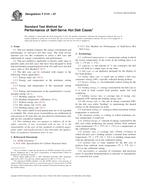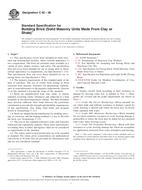1.1 This practice is intended as an aid in establishing and maintaining a preparatory cycle for electroplating on high-carbon steel (Note 1) producing a minimum of hydrogen embrittlement and maximum adhesion of the electrodeposited metal. For the purpose of this practice, steels containing 0.35% of carbon or more, and case-hardened low-carbon steel, are defined as high-carbon steels. There is no generally recognized definite carbon content dividing high- from low-carbon steels for electroplating purposes.
Note 1-Electroplating of plain high-carbon steel introduced problems not found in similar operations on low-carbon steel. During the cleaning and electroplating cycle, high-carbon steel differs from low-carbon steel in regard to its greater tendency to become embrittled and the greater difficulty in obtaining maximum adhesion of the electrodeposit. The preparation of low-carbon steel for electroplating is covered in Practice B183.
1.2 This practice does not apply to the electroplating of alloy steel. For methods of chromium electroplating directly on steel see Practice B177.
1.3 This standard does not purport to address all of the safety problems associated with its use. It is the responsibility of the user of this standard to establish appropriate safety and health practices and determine the applicability of regulatory limitations prior to use. For a specific hazards statement, see 3.1.
Product Details
- Published:
- 10/10/1999
- Number of Pages:
- 4
- File Size:
- 1 file , 39 KB


